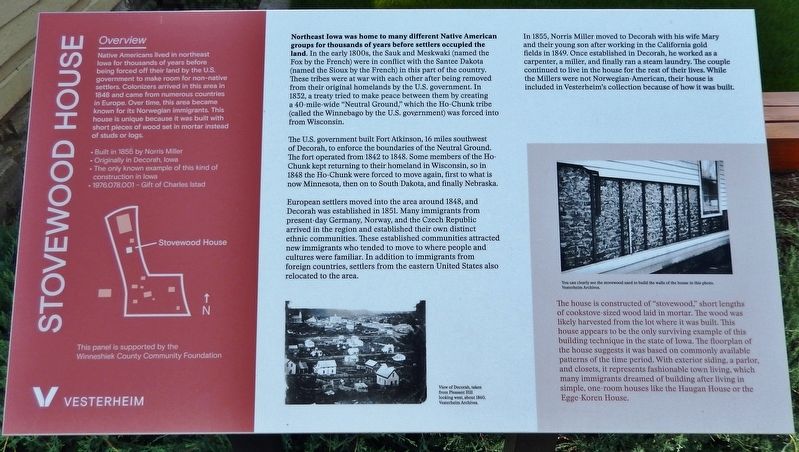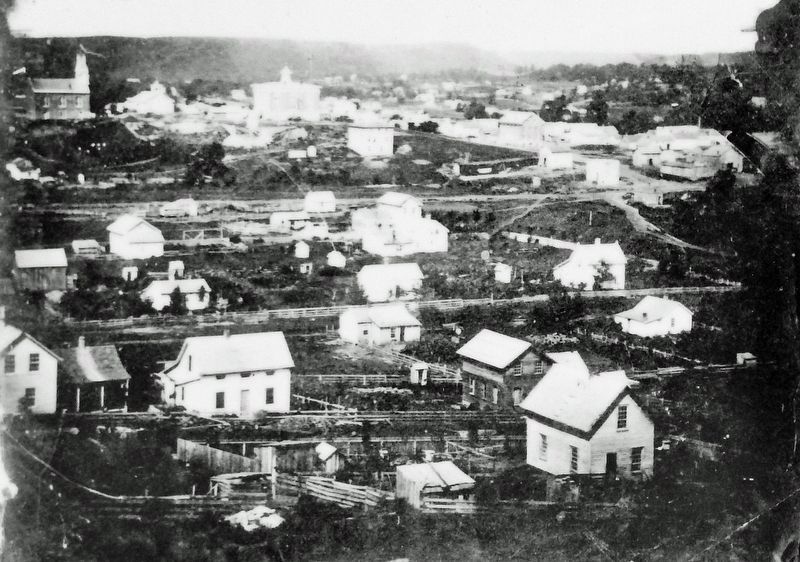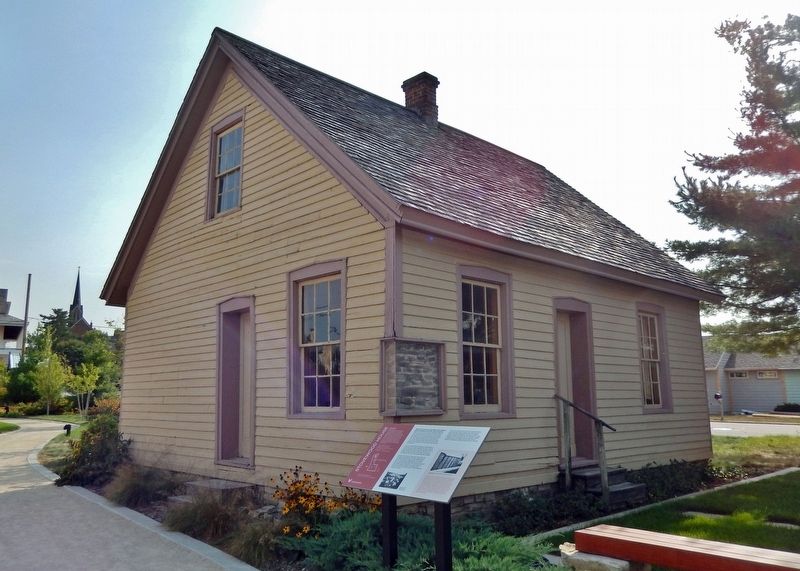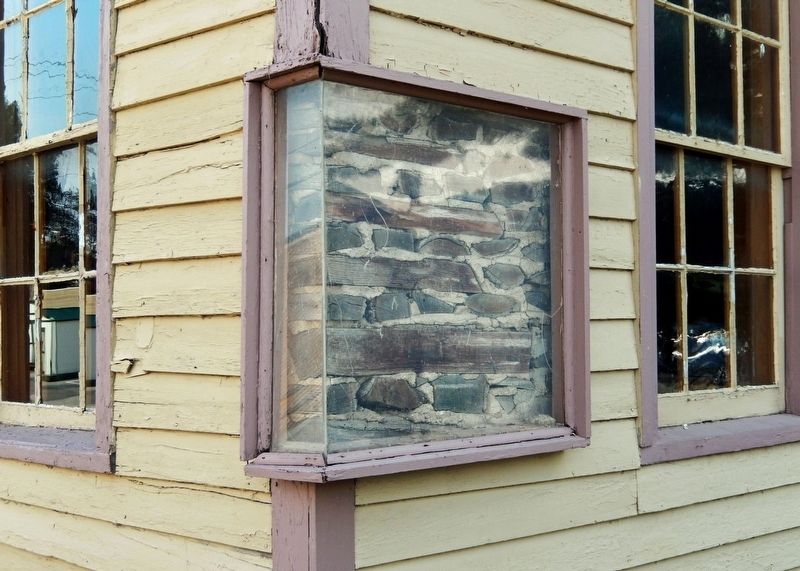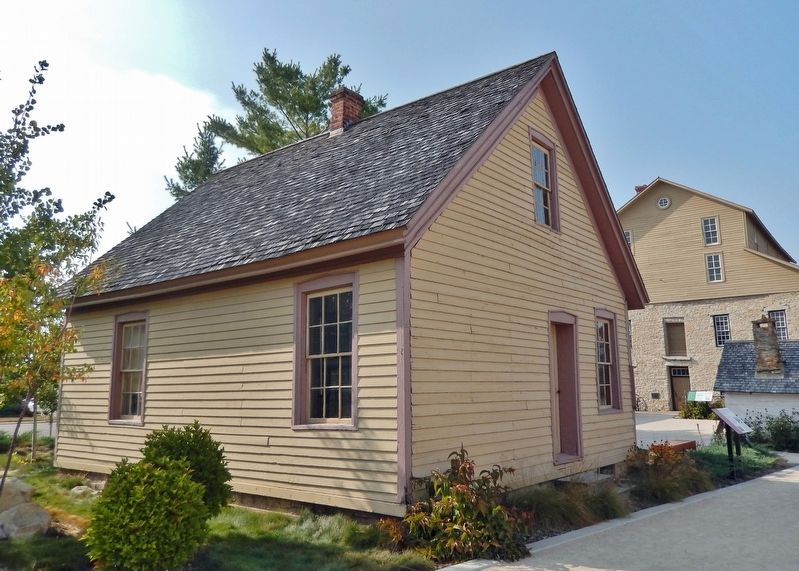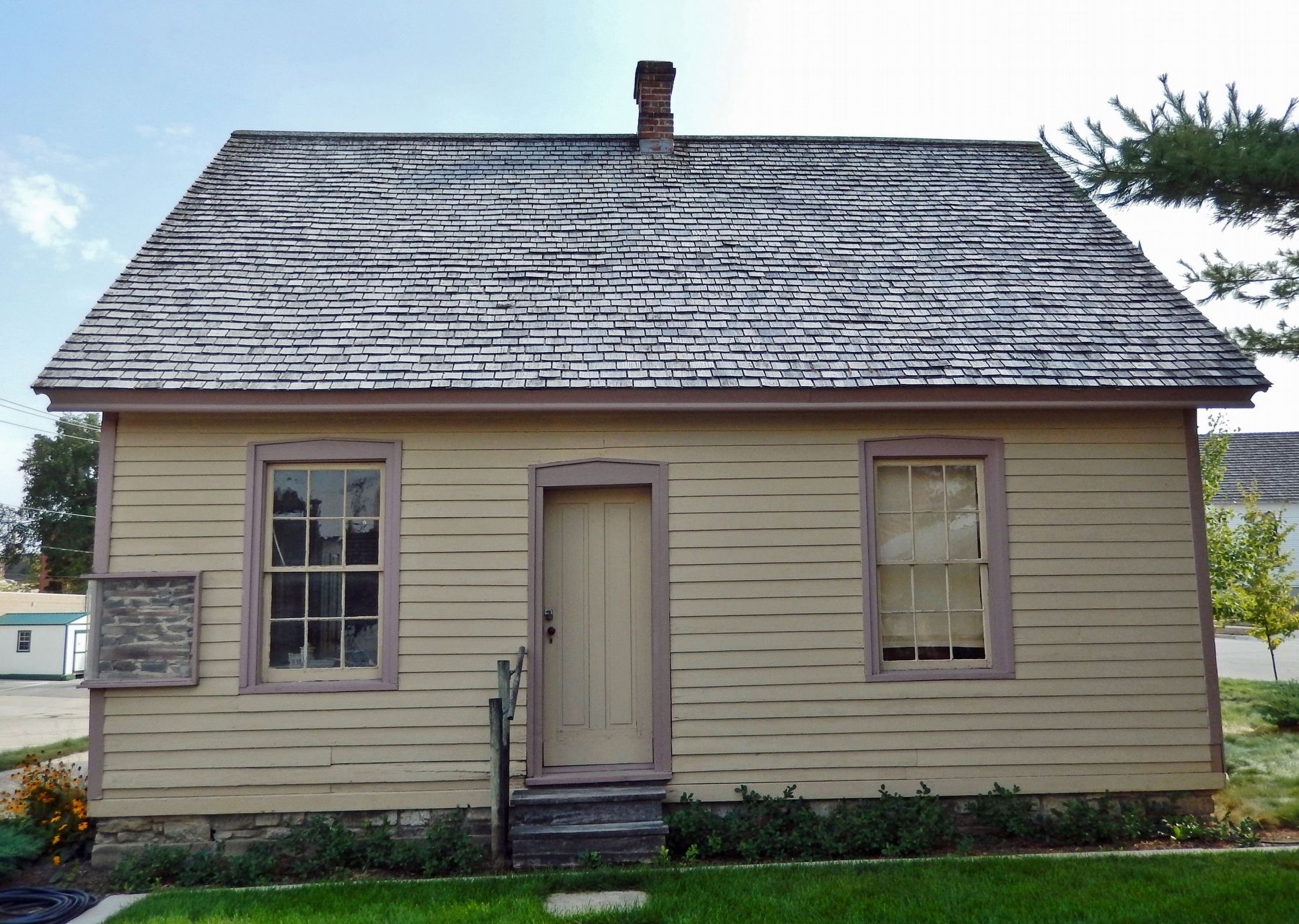Decorah in Winneshiek County, Iowa — The American Midwest (Upper Plains)
Stovewood House
Heritage Park, Vesterheim Norwegian-American Museum
Overview
Native Americans lived in northeast Iowa for thousands of years before being forced off their land by the U.S. government to make room for non-native settlers. Colonizers arrived in this area in 1848 and came from numerous countries in Europe. Over time, this area became known for its Norwegian immigrants. This house is unique because it was built with short pieces of wood set in mortar instead of studs or logs.
• Built in 1855 by Norris Miller
• Originally in Decorah, Iowa
• The only known example of this kind of construction in Iowa
• 1976.078.001 — Gift of Charles Istad
Northeast Iowa was home to many different Native American groups for thousands of years before settlers occupied the land. In the early 1800s, the Sauk and Meskwaki (named the Fox by the French) were in conflict with the Santee Dakota (named the Sioux by the French) in this part of the country. These tribes were at war with each other after being removed from their original homelands by the U.S. government. In 1832, a treaty tried to make peace between them by creating a 40-mile-wide “Neutral Ground,” which the Ho-Chunk tribe (called the Winnebago by the U.S. government) was forced into from Wisconsin.
The U.S. government built Fort Atkinson, 16 miles southwest of Decorah, to enforce the boundaries of the Neutral Ground. The fort operated from 1842 to 1848. Some members of the Ho-Chunk kept returning to their homeland in Wisconsin, so in 1848 the Ho-Chunk were forced to move again, first to what is now Minnesota, then on to South Dakota, and finally Nebraska.
European settlers moved into the area around 1848, and Decorah was established in 1851. Many immigrants from present-day Germany, Norway, and the Czech Republic arrived in the region and established their own distinct ethnic communities. These established communities attracted new immigrants who tended to move to where people and cultures were familiar. In addition to immigrants from foreign countries, settlers from the eastern United States also relocated to the area.
In 1855, Norris Miller moved to Decorah with his wife Mary and their young son after working in the California gold fields in 1849. Once established in Decorah, he worked as a carpenter, a miller, and finally ran a steam laundry. The couple continued to live in the house for the rest of their lives. While the Millers were not Norwegian-American, their house is included in Vesterheim's collection because of how it was built.
The house is constructed of “stovewood,” short lengths of cookstove-sized wood laid in mortar. The wood was likely harvested from the lot where it was built. This house appears to be the only surviving example
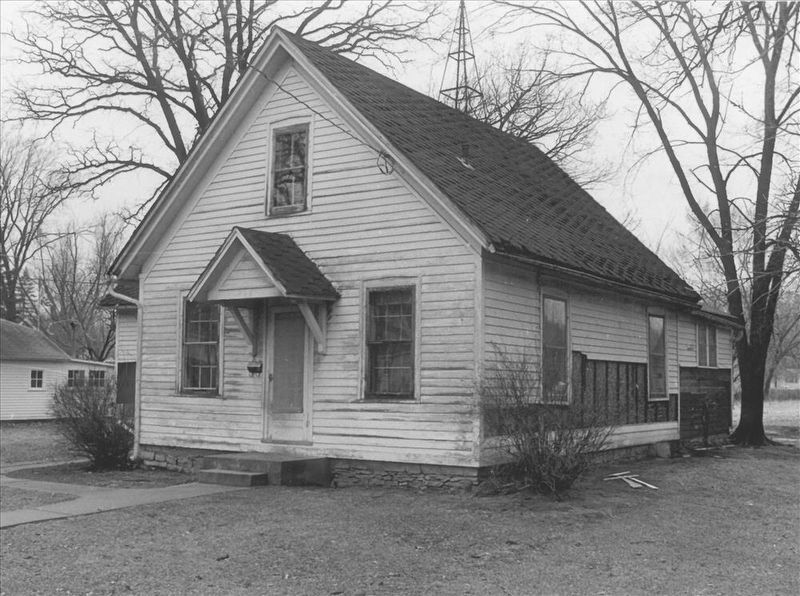
via NPS, unknown
2. The Miller-Norris House aka The Stovewood house
National Register of Historic Places Nomination Form
NPGallery Digital Asset Management System
Click for more information.
NPGallery Digital Asset Management System
Click for more information.
Erected by Vesterheim Norwegian-American Museum.
Topics and series. This historical marker is listed in these topic lists: Architecture • Immigration • Native Americans • Settlements & Settlers. In addition, it is included in the National Register of Historic Places series list. A significant historical year for this entry is 1855.
Location. 43° 18.329′ N, 91° 47.525′ W. Marker is in Decorah, Iowa, in Winneshiek County. Marker can be reached from North Mill Street just north of West Water Street, on the right when traveling north. The marker is located in Vesterheim Norwegian-American Museum Heritage Park. Touch for map. Marker is at or near this postal address: 520 West Water Street, Decorah IA 52101, United States of America. Touch for directions.
Other nearby markers. At least 8 other markers are within walking distance of this marker. Blacksmith Shop (here, next to this marker); Painter-Bernatz Mill (a few steps from this marker); Conservation (within shouting distance of this marker); Timber Framing
(within shouting distance of this marker); Haugan House (within shouting distance of this marker); Rovang Schoolhouse (within shouting distance of this marker); Stabbur (within shouting distance of this marker); Bethania Church (within shouting distance of this marker). Touch for a list and map of all markers in Decorah.
Regarding Stovewood House. National Register of Historic Places #76000814.
From the National Register Nomination:
The Miller Stovewood House is one of three known dwellings of this type in the United States. The other two dwellings are located in Wisconsin. Miller's choice of oak stovewood as a building material is understandable. One hundred and twenty years ago large forests of oak surrounded Decorah, and oak stovewood was probably much more readily available and certainly less expensive than sawed boards. The exterior walls are furred and covered with clapboards. They range from 16 to 18 inches in thickness. The interior of the house is simple. There are four rooms on the first floor with simple cut wood floors and six over six double hung sash windows tor light. A steep narrow stair leads to the second floor which has two rooms. The interior walls are of a traditional frame construction. The house was originally heated by wood stoves vented to a central chimney. The chimney is still extant above the roof line.
Related markers. Click here for a list of markers that are related to this marker. Vesterheim Norwegian-American Museum Heritage Park
Also see . . .
1. Norris Miller Stovewood House. Vesterheim website entry:
(Includes link to a virtual tour of the interior.) Excerpt:
Decorah, Iowa (1855-56). Originally located on the west side of Decorah, this house is a rare example of stovewood construction, using short lengths of wood and mortar. This system originated in the mid-1800s, apparently in Canada. Norwegian immigrants who returned to Norway introduced the construction technique around 1900 in Norway. Vesterheim acquired it because of its unique architecture—it is the only example known to exist in Iowa. It is listed on the National Register of Historic Places.(Submitted on November 22, 2023, by Cosmos Mariner of Cape Canaveral, Florida.)
2. Norris Miller House. Wikipedia entry:
Excerpt:
The 1˝-story frame house features a vernacular Classical cornice, symmetrical plan, a gable roof, and a limestone basement. The structure is composed of oak that is split into short lengths for use in a stove, or stovewood. It is laid with mortar made up of ash and lime. Decorah had two other houses similar to this one, but they have been torn down. All of them could have been built by Norris Miller, who settled in Decorah from Ohio in 1855. The house was moved to the Vesterheim Norwegian-American Museum in 1976 in order to preserve it.(Submitted on November 22, 2023, by Cosmos Mariner of Cape Canaveral, Florida.)
Credits. This page was last revised on November 24, 2023. It was originally submitted on November 22, 2023, by Cosmos Mariner of Cape Canaveral, Florida. This page has been viewed 44 times since then and 10 times this year. Photos: 1. submitted on November 22, 2023, by Cosmos Mariner of Cape Canaveral, Florida. 2. submitted on November 23, 2023, by Larry Gertner of New York, New York. 3, 4, 5, 6, 7. submitted on November 22, 2023, by Cosmos Mariner of Cape Canaveral, Florida.
